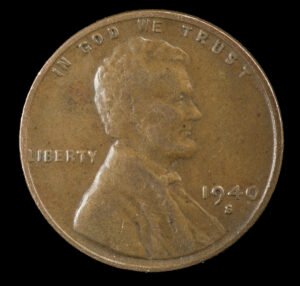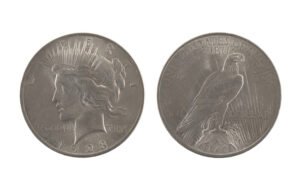Recently, a pristine 1945 Lincoln Penny graded by PCGS commanded a staggering price of $20,000 at a prestigious numismatic auction. This record-breaking price not only highlights this penny’s rarity but also hints at its craze among collectors!
This comprehensive guide will help you find out if you own such a rare and valuable 1945 Wheat Cent. From understanding mintages and grading scales to rare varieties and unique errors, you will find expert insights into finding a precious 1945 Lincoln Penny!
Brief History of the Lincoln Penny Coin
The first Lincoln cents were introduced in 1909 to celebrate Abraham Lincoln’s 100th birthday. These cents were highly popular until 1942 when the US Mint replaced the original Wheat Lincoln coins with the 1943 Wartime Steel Cents, made of 99% carbon steel and 1% zinc during WWII.
However, the original copper coins were resumed in 1944 with the same 95% copper composition, and these cents continued for another 12 long years. In 1959, the new Lincoln Memorial cent featuring the Lincoln Memorial replaced the customary Lincoln cents with the wheat design.
| 1945 Lincoln Penny | Key Features & Facts |
| Coin Composition | 95% Copper, 5% Tin and Zinc |
| Minting Location | Philadelphia, Denver |
| Minting Year | 1945 |
| Face Value | 1-cent (0.01$) |
| Weight | 3.11 grams |
| Diameter | 19.05 mm |
| Thickness | 1.52 mm |
| Designer | Victor David Brenner |
| Mint Marks | “D” (Denver Mint), “S” (San Francisco), no mint mark (Philadelphia Mint) |
| Total Mintage | 1,488,533,000 |
How to Spot a 1945 Lincoln Penny (Design & Composition)
The best way to easily identify a 1945 penny is by checking the unique designs on the front and back, both designed by Victor David Brenner.
1945 Penny Obverse (Heads):
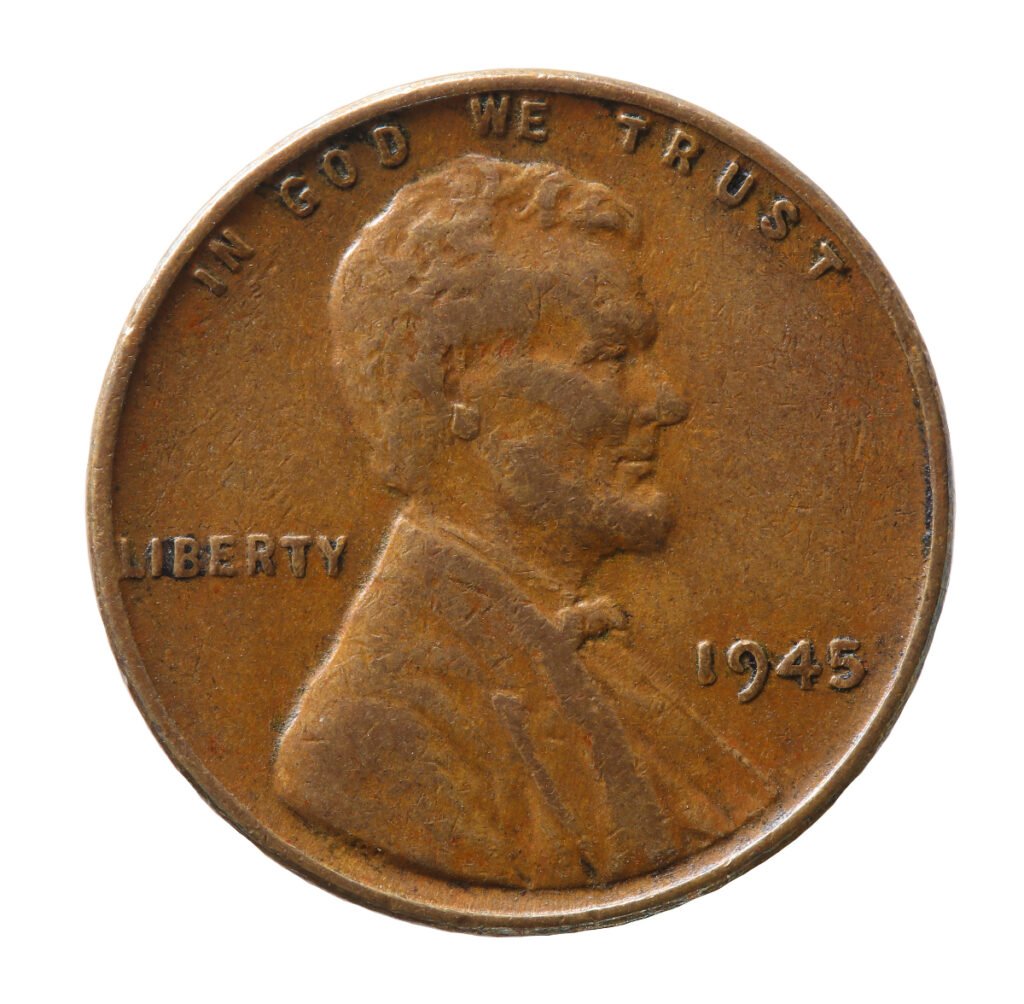
- A portrait of Abraham Lincoln
- The words “IN GOD WE TRUST” along the upper edge
- The mint date “1945” on the lower-right side
- The word “LIBERTY” on the left side
- Mint mark below the mint year
1945 Penny Reverse (Tails):
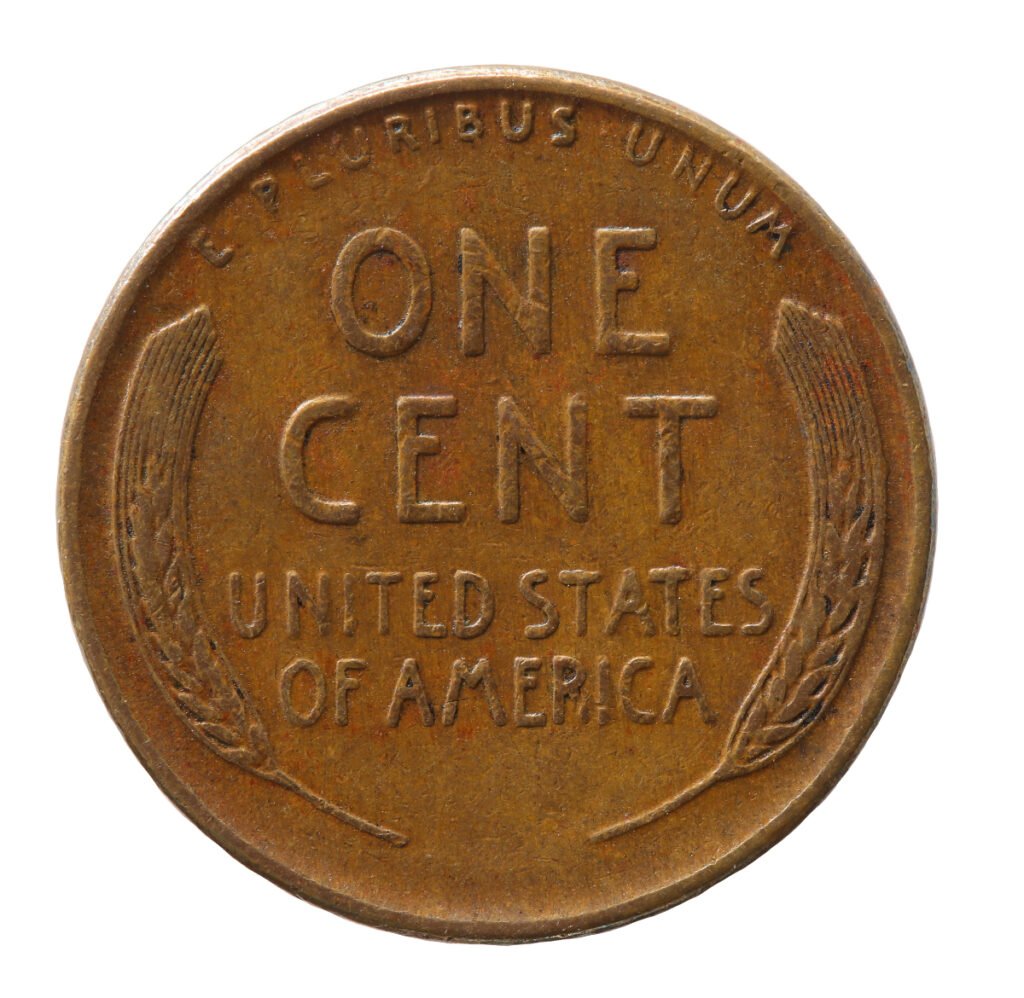
- The words “E. PLURIBUS UNUM” along the upper edge
- The face value “ONE CENT” at the center
- The words “UNITED STATES OF AMERICA” right below the face value/denomination
- Two wheat stalks around the edge on left and right sides
Coin Composition & Dimensions:
The 1945 Lincoln Penny was composed of 95% copper and 5% zinc and tin. This composition is popular as “shell case” or “war penny” as its use was a direct result of wartime metal shortages since copper was needed for military purposes.
This composition was reintroduced in 1944 after a year of minting zinc-plated steel coins in 1943 and continued through 1982. The coin weighs 3.11 grams and has a diameter of 19 mm.
Finding the Value of the 1945 Wheat Penny (4 Key Factors)
A 1945 cent is generally worth only a few dollars in commonly available grades (coin condition), while well-preserved examples, particularly from the Denver and San Francisco mints, can still command premium prices of a few thousand dollars.
Check the following four factors to assess the final value of your old 1945 Wheat Cent.
1. Mintage & Mint Marks
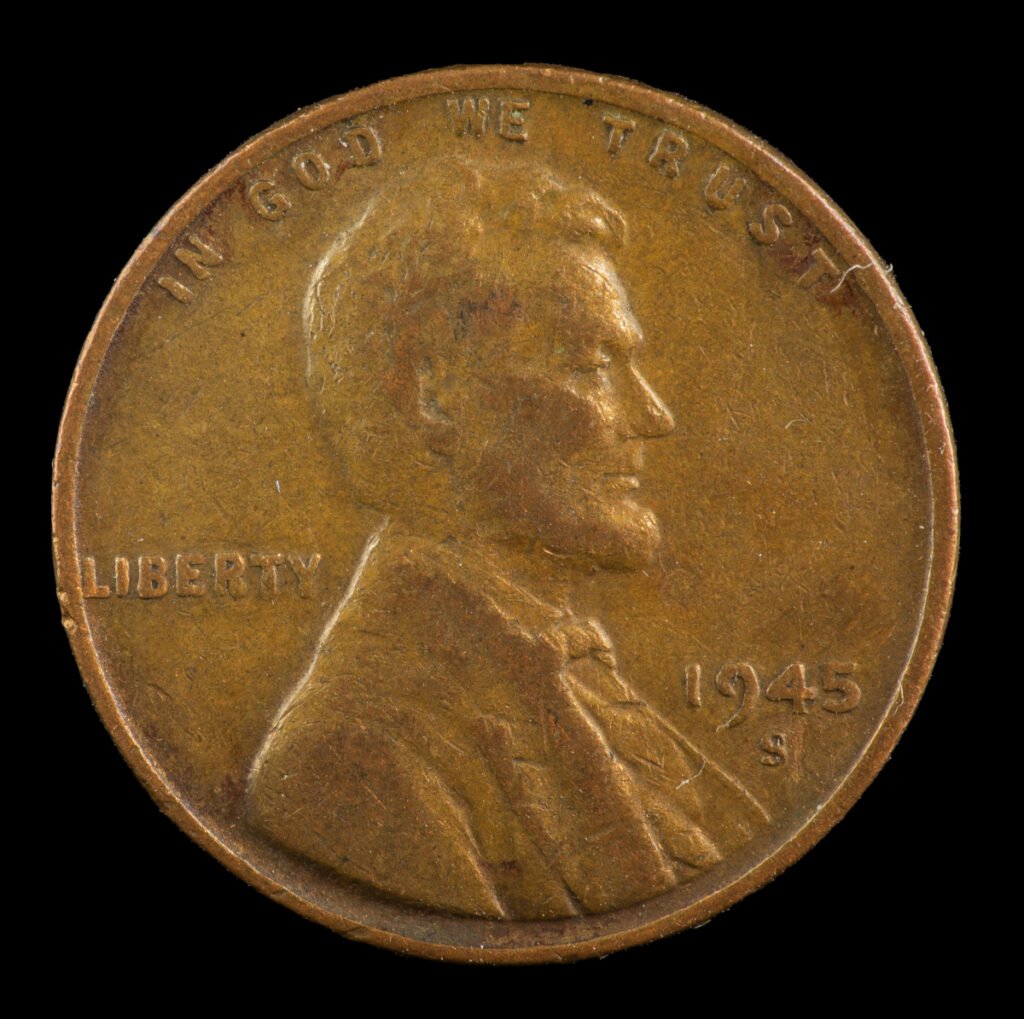
The total number of Wheat Cents minted in 1945 was 1,488,533,000. Among this, most coins were minted at the Philadelphia Mint (with no mint mark), which makes the 1945 penny most common and less valuable than the 1945-D (Denver Mint) cent and 1945-S (San Francisco) cent.
Generally, the higher the mintage, the more common the coin is and the lower its value.
| 1945 Penny Mint Marks | Total Mintage |
| 1945-p Lincoln Penny (no mint mark) | 1,040,515,000 |
| 1945-S Lincoln Penny (s mint mark) | 181,770,000 |
| 1945-D Lincoln Penny (d mint mark) | 266,268,000 |
2. Coin Grade & Condition
The first and most important factor that determines the value of an old 1945 Wheat Cent is the coin condition, also known as coin grading, when professionally done by grading companies like PCGS and NGC.
The 1945 (no mint mark) Penny is quite easily found in common grades, making them worth only a few cents, if anything. However, extremely high coin grades, such as MS68, can make the 1945 Cent worth up to $5,000! One such high-grade 1945 penny with MS68 grade sold for around $4,300 on Heritage Auctions.
Similarly, high-grade 1945-S and 1945-D Pennies can also have a high value of up to $15,000, as they have a lower mintage than the 1945 no-mint mark penny.
| Coin Grading | 1945-p Lincoln Penny Value | 1945-s Lincoln Penny Value | 1945-d Lincoln Penny Value |
| Poor (0) to Extremely Fine (XF45) | N/A | N/A | N/A |
| Almost Uncirculated (AU50) to Mint State (MS60) | $1 – $5 | $1 – $5 | A few cents |
| Mint State (MS60 – MS67) | $10 – $400 | $10 – $120 | $5 – $200 |
| Mint State (MS67+ onwards) | $500 – $5,000+ | $300 – $2,000+ | $300 – $14,000 |
3. Rare Mint Errors in 1945 Lincoln Wheat Penny
A mint error is another valuable factor that can seriously impact a 1945 penny’s worth. While not as common as in some other years, the 1945 Lincoln Penny does have some valuable errors:
Off-center Strike
The off-center strike error happens when a coin planchet isn’t correctly aligned with the die inside the striking chamber. This 1945-cent mint error can greatly impact the coin’s value.
I found an MS64-graded 1945 Brown Penny with a 15% off-center strike error that sold for almost $400 on eBay. Generally, an MS64 penny only sells for around $10 – $15.

Double Die Error (DDR and DDO)
This valuable error can be identified with the clear doubling of letters and numbers on the reverse and obverse of the 1945 Lincoln Penny. High-grade 1945 1C coins with this error can sell for up to $4,000 in any auction. For example, one MS67 DDR 1945-p cent sold for $3,819 on Heritage Auctions.
Struck on Elliptical Clip Planchet
This 1945 error penny results from striking on an Elliptical Clip Planchet, which is a result of a flawed metal strip. Though rarer than other error coins, a 1945 1c Struck on Elliptical Clip Planchet MS64 sold for $180 on Heritage Auctions.
Apart from these, you can also find some other rare errors, such as cud error, broadstruck error, and double-struck error on a 1945 penny, which can hike its worth up to few hundred dollars.
4. 1945 Lincoln Penny Color Varieties
According to PCGS, all 1945 Wheat Cents have three varieties based on coin colors: red (RD), brown (BN), and red and brown (RB). Among these, red 1945 pennies are the most valuable, and brown ones are the least valuable.
For example, the highest value of 1945 BN pennies is around $1,000, while a 945 RD penny can sell for a maximum price of up to $15,000!
4 Simple Steps to Spot a Fake 1945 Wheat Penny
Spotting a fake 1945 Lincoln Penny requires keen attention to design details, composition, and dimensions of common counterfeit characteristics. You can take the following steps to distinguish fake 1945 pennies from real ones.
- Check the weight and dimensions: The coin should weigh around 3.11 grams and measure 19 mm in diameter.
- Examine the coin’s color: Due to the 95% copper composition, the real 1945 penny should have a reddish-brown.
- Verify the mint mark position: Check for signs of alteration in the mint marks or dates or added fake details.
- Check the magnetic properties: Genuine copper coins are not magnetic, so a 1945 Lincoln Penny should not stick to a magnet.
The 1945 Lincoln Penny may have a huge mintage, but scarce examples with rare mint errors and exceptionally high grades are greatly sought after by coin collectors. So, use this detailed guide to transform your old 1945 penny into some big bucks!
The 1943 penny and 1944 penny are other highly valuable American pennies from this Lincoln penny series, worth thousands! Learn more about them in my detailed guides.
Note: This article is intended for informational, educational, and entertainment purposes only. Some images are illustrative and may not represent actual brands, products, or related entities. All trademarks, product names, brand logos, packaging, and other intellectual property referenced remain the exclusive property of their respective owners. Any brand mentions or references are provided solely for descriptive and educational context and do not imply any formal or commercial association.



